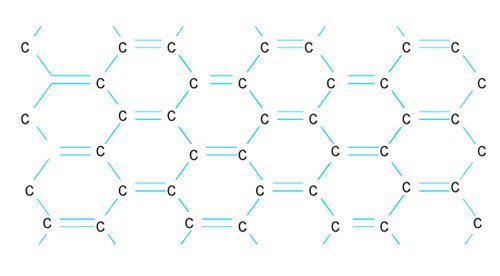Activated Carbon: our future

Activated carbon is a product that can revolutionize life as we know it, it is effective, versatile, easy to use and with many capacities. Some of the people know it for its abilities to purify the water because it is used in the filters of common homes as a method to eliminate impurities, odors and colors in all-purpose water, but this is capable of much more.
The common carbon is a porous material that has the ability to adsorb or retain between its pores different elements, compounds and / or molecules, in addition, that much of its chemical structure is composed of carbon that is one of the most common chemical elements in Earth and that is necessary for life as we know it. However, the engineering, scientific and other study has gone further and have managed to improve what we know as common carbon.
When carbon is activated, it acquires incredible properties, since it is able to eliminate odors, colors, flavors and elements much faster than carbon, and it also manages to do it in greater quantity, it means, when carbon gets activated acquires a surprising surface internal area that goes from 300 m2 to 1500 m2 per gram of carbon making it have a surprising capacity of adsorption.
By having an incredible internal area, this can eliminate almost anything and can be used in both aqueous solutions and gases. In the case of aqueous solutions, we already know that it is used to eliminate certain impurities contained in the water used in home, but it is also used for the removal of different compounds, both organic and inorganic, in the process area; for example, to eliminate them from an effluent, from a multicomponent solution, etc. On the other hand, it can also be used in the gas phase for the same purpose; It is also known as sieves because it can separate from a gas stream what is desired, however, all this depends on the activation of carbon.
Activated carbon can have different characteristics based on the activation method, because it can adsorb or retain certain molecules among its pores instead of others due to its molecular size, in addition to the polarity of the carbon and the difference between the surface areas thereof, and this can be worked from its activation.
In industry there are two types of activation, physical and chemical, the first one consists in carbonizing carbon at temperatures higher than 1000 ° C without the presence of oxygen to prevent combustion, then it is activated with water vapor, carbon dioxide or nitrogen as a method to expand its pores; actually here we can get different variants of carbon because by using each of these gases and keeping the carbonization temperature constant we can get 3 different activated carbons and if their temperature varies even more different these will be.
On the other hand, the chemical activation is slightly different, this method consists in impregnating the carbon with an activating agent that basically is dehydrating like phosphoric acid, nitrous acid, zinc chloride, etc. And this being in contact with the coal enters into its pores and expands them; then it is exposed to temperatures lower than the one used in the physical activation, the carbon is washed with water and a strong base to eliminate the remains that may exist of the activating agent used and finally it is dried at an average temperature of 100 ° C.
Scientists and engineers have concluded with the use of chemical activation can obtain a pore radius much greater than with physical activation, however, this is the choice of the person because depending on the raw material used to create the carbon can we btaining macropores, mesopores and micropores that are very different and thanks to it can retain certain molecules instead of others, because as we know the molecules have different sizes and radii. In turn, the polarity of the carbon is important since if it is negative or positive it will have the capacity to adsorb acids, bases or both, and it has been concluded that this depends on the carbonization temperature used and the cooling conditions. That is why the characterization of activated carbon is of the utmost importance, since it will really be possible to determine exactly where it can be applied and for what purpose, but nowadays there are already experimental patented methodologies that are rigorous for the preparation of an activated carbon with a certain purpose.
Activated carbon has been involved in a multitude of processes, it is very versatile and something more important is that it is a material that can be obtained from recycling using shells, shells, plants, etc., and with a little help anyone could create basic supplements for the home such as a water filter for your own consumption or for a fish tank, or for facials, etc. Industrially this issue has already been expanded to help the environment and eliminate emissions of pollutants to the atmosphere.
✅ @saren96, I gave you an upvote on your first post! Please give me a follow and I will give you a follow in return!
Please also take a moment to read this post regarding bad behavior on Steemit.
Hey thanks